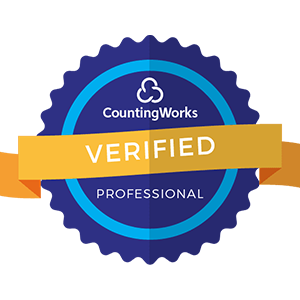
For many companies, remote work has become the new normal. The pandemic accelerated an already growing trend toward virtual and distributed teams. A 2021 Gartner survey found that 82% of companies plan to allow employees to work remotely at least some of the time going forward.
While remote work offers many benefits like increased flexibility, productivity and access to global talent, it also presents unique legal and compliance challenges. With employees scattered across different cities, states and even countries, how can businesses ensure everyone adheres to applicable labor laws and regulations? It takes intentional policies, clear communication and consistent enforcement.

The #1 rule of remote work compliance is that employment laws apply based on the location of the employee, not the employer. If your company is based in New York but you have remote workers in California, Texas and France, you need to follow the labor regulations in each of those places.
This means you could have team members in the same role but subject to different rules regarding things like:
"The biggest challenge employers face with a distributed workforce is keeping track of the different and ever-changing state and local laws that apply to each employee based on where they are physically working," says Kara Maciel, employment law attorney at Conn Maciel Carey LLP.
For example, did you know?
Staying on top of it all can feel overwhelming, but it's crucial. Penalties for non-compliance are steep, with potential legal costs, fines and reputational damage. Make a list of everywhere your remote employees work and research the key employment laws in each jurisdiction. Consider hiring a legal consultant who specializes in multi-state and international workforces to help you navigate the landscape.
Another complex issue is making sure you correctly classify workers as either employees or independent contractors. Misclassification is a common pitfall for employers, and the stakes are higher with remote teams.
Generally, a worker is considered an employee if the company controls what will be done and how it will be done. Independent contractors typically have more autonomy in when and how they complete the work.
Employees are entitled to labor protections like minimum wage, overtime, and family and medical leave. Companies also pay a portion of employees' Social Security and Medicare taxes, as well as unemployment and workers' compensation insurance. Independent contractors do not receive these benefits and are responsible for paying their own self-employment taxes.
However, some states are cracking down on worker misclassification with stricter tests to determine employee status. For example, California's ABC test starts with the assumption that workers are employees unless the hiring entity can prove:
(A) The worker is free from control and direction in the performance of services; and
(B) The worker is performing work outside the usual course of the business; and
(C) The worker is customarily engaged in an independently established trade, occupation, or business.
Many other states like Massachusetts, New Jersey and Illinois have adopted similar ABC-style tests in recent years. Just because someone is an independent contractor under federal law doesn't necessarily mean they are under state law.
Getting classification wrong can lead to expensive legal battles, back taxes and penalties. In 2016, Uber paid $100 million to settle lawsuits over misclassifying drivers as contractors. The issue is even more complicated with remote workers in multiple states with differing rules.
Audit your current worker classifications and carefully assess new hires. Document the factors determining whether someone is an employee or contractor. It may be worth engaging an employment attorney or HR consultant to review your designations. When in doubt, err on the side of employee status.

All the standard federal, state and local non-discrimination and non-harassment laws still apply when recruiting and hiring remote workers. In fact, you may need to be even more diligent to avoid unintentional bias in a virtual setting.
Train anyone involved in hiring on what questions they can and cannot legally ask. For example, don't inquire about a candidate's age, marital status, religion, disability or pregnancy. Make sure job applications and interviews focus on essential job requirements only.
Standardize your evaluation process as much as possible to reduce the influence of subjective criteria that could be discriminatory. Use structured interviews where you ask all candidates the same job-related questions in the same order. Have a diverse hiring panel to get multiple perspectives.
Remote recruiting through online applications and video interviews could potentially disadvantage older workers and those with disabilities. Make sure your systems are accessible and user-friendly for all. Allow candidates to request accommodations.
If using AI-based screening tools to filter resumes or analyze video interviews, confirm they have been tested for bias. Some states are starting to regulate the use of AI in hiring decisions.
Be aware of "ban the box" laws that restrict when you can ask about criminal history. Some states and cities prohibit employers from inquiring about salary history, which perpetuates pay disparities.
Background checks also have special rules. Under the Fair Credit Reporting Act (FCRA), you must get written consent before conducting a background check and provide certain disclosures. Some states limit the use of credit reports in employment decisions.
Finally, once you decide to hire someone, make sure you use a compliant offer letter. It should clearly outline:
Having thorough, vetted hiring documentation will help protect against discrimination claims and other legal issues down the road. An HR attorney can help draft legally sound policies and templates.
Accurately tracking hours worked is essential for avoiding wage and hour violations, which are among the most common and costly employment law claims. Remote work makes timekeeping both more important and more challenging.
Nonexempt employees must be paid at least minimum wage and overtime for all hours worked, regardless of whether that work happens in an office, at home, or anywhere else. But it can be harder to monitor when remote employees are actually working.
"Employers need to set clear expectations about logging time, taking breaks, and not working off-the-clock," says Maciel. "They should also have a reliable system for recording all time worked."
Some options include:
Whichever method you choose, make sure it's easy for employees to use consistently. Don't place unreasonable burdens on them to prove they're working. The goal is to prevent accidental overtime, not micromanage their day.
Have a clear policy that all time worked must be reported, even if it wasn't authorized in advance. Prohibit off-the-clock work and banning report was requested.
If you use productivity monitoring software, ensure it doesn't violate privacy laws. Some states like Delaware and Connecticut require employers to give written notice before electronically monitoring employees.
Also consider how your time tracking procedures impact employees in different time zones. They should be able to record time during their normal work hours, not yours.
Finally, review time records regularly to catch any irregularities or potential compliance issues. If employees consistently have missing time punches or report more than 40 hours, investigate the cause. Make adjustments as needed to prevent wage and hour mishaps.
Even if your whole team is virtual, you're still responsible for sharing mandatory workplace notices. These include things like:
The challenge is figuring out how to effectively provide this information when you don't have a physical location to post it.
"An increasingly common approach is to have an easily accessible intranet site or web portal dedicated to required postings and important company policies," says Lindsay Dennis, Associate General Counsel at ThinkHR & Mammoth. "Employers then send quarterly email reminders to the full team with links to the site."
Another option is mailing hard copies of mandatory notices to remote employees' homes on a regular basis. You could also include acknowledgment of receipt of required postings in your onboarding paperwork.
Whatever delivery method you pick, make sure you can track when employees receive or access notices. Keep records demonstrating your compliance efforts.
Also, don't forget that some states have additional posting requirements beyond federal law. And for employees working outside the U.S., you'll need to research applicable rules from national and local governments.
If you're not confident your current posting process covers all the bases, consult an employment law attorney or HR compliance specialist. They can audit your practices and suggest improvements.

Employers have a general duty under the Occupational Safety and Health Act (OSHA) to provide a safe working environment, even for remote employees. While you may have limited ability to control an employee's home office setup, you still need to take reasonable steps to prevent work-related injuries and illnesses.
At a minimum, share ergonomic best practices for home office furniture and equipment positioning. Encourage workers to take regular stretch breaks and report any discomfort before it becomes a repetitive strain injury.
Consider developing a remote work safety checklist that employees complete during onboarding and periodically thereafter. It could cover topics like:
Some employers go a step further and provide a stipend for employees to purchase ergonomic office furniture and equipment. A few hundred dollars could save you thousands in workers' compensation claims down the road.
If a remote employee does report an injury, respond promptly. Guide them through the workers' compensation claim filing process. It gets tricky determining whether an injury is truly work-related when it happens at home, which is why careful documentation of your safety efforts is key.
Under OSHA rules, you must record qualifying injuries on the OSHA 300 log even if they occurred in a home office. Pandemic-related illnesses may also need to be recorded if certain criteria are met.
Don't let "out of sight, out of mind" be your approach to remote worker safety. A little prevention goes a long way in fulfilling your obligations and keeping your team healthy.
Data security is a major concern with remote teams. Sensitive company, customer and employee information is being accessed on a multitude of devices and networks outside your direct control. One accidental disclosure or malicious breach could spell disaster.
At the same time, privacy is a growing legal minefield. A patchwork of state, federal and international laws governs how employers can collect, store and use personal data. With employees in far-flung locations, you may be subject to more stringent rules than if everyone worked in a central office.
To mitigate risks, start by assessing what confidential data your remote workers handle and how well it's currently protected. Look for vulnerabilities like:
Based on your findings, develop comprehensive written data security and acceptable use policies. At a minimum, require all remote workers to:
Also, don't forget about physical security. Remind remote employees to be mindful of their surroundings and avoid working with sensitive data in public places. Provide lockable storage if needed for paper files.
Make data security training mandatory and recurring. Send simulated phishing tests to keep people on their toes. And make sure you have an incident response plan to quickly contain breaches.
On the privacy front, start with a clear privacy policy explaining what personal data you collect from employees, how you use it, and how you protect it. Only gather information you truly need, and don't retain it longer than necessary.
Be transparent with employees about any monitoring of their digital activity on company devices. Some states require advance written consent for certain tracking.
If you have employees in the EU, ensure your data practices comply with the General Data Protection Regulation (GDPR), which sets strict rules around processing personal data. Violations can result in huge fines.
Several U.S. states have recently passed their own data privacy laws that give consumers certain rights over their personal information, like the California Consumer Privacy Act (CCPA). Employees may be covered by some provisions, so review the details carefully.
While no security is foolproof, making data protection a top priority will go a long way in preventing devastating losses. Work with IT and legal to craft policies that balance business needs with compliance obligations.
Remote work offers incredible flexibility, but labor laws still place some constraints on just how flexible you can be. It's a delicate balance to give employees freedom while maintaining sufficient oversight to avoid costly compliance mistakes.
The key is to set expectations early and enforce rules consistently. Put all your remote work policies in writing and have employees acknowledge their receipt and agreement. Train managers on red flags to watch for and how to respond.
At the same time, don't let compliance become a straightjacket. Laws evolve, business needs change, and unique situations will arise. Be ready to adapt as needed.
When in doubt, always lean toward the most conservative interpretation of applicable laws. It's better to give an employee more breaks or overtime than required than to short them and risk a claim.
If you're unsure how to handle a tricky issue, reach out to an employment lawyer or HR compliance expert for guidance. A small upfront investment in prevention could save you major headaches later.
The world of remote work is still new to many companies. Navigating multi-jurisdictional legal compliance is a daunting challenge. But with clear policies, consistent practices and a commitment to doing right by your employees, you can build a thriving, low-risk virtual workplace.
When you give remote workers the trust and support to succeed, they'll reward you with productivity, loyalty and a positive reputation in the marketplace. That's the real key to remote work success.


